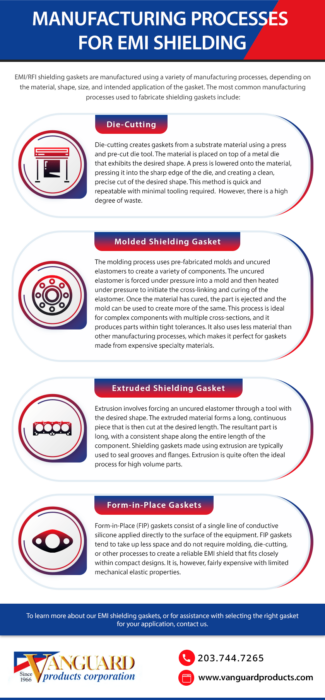Electromagnetic interference (EMI) and radio frequency interference (RFI) are common challenges for electronics manufacturers in an increasingly electronic world. EMI and RFI shielding gaskets are used in electronic devices to help shield sensitive components from outside electromagnetic and radio waves by helping to create a Faraday cage around the components. This ensures that the equipment works as intended. While EMI shielding was previously most commonly used for communication and military equipment, the increased ambient EMI radiation has made shielding critical for more electronics.
To prevent interference, it is important to choose the right EMI and RFI protection. EMI shielding gaskets are specifically designed to create a conductive path for electrical current between two surfaces within an electronic array helping to form a complete Faraday cage. This helps to ensure that the equipment’s conductivity is dependable while preventing the intrusion of EMI radiation. There is a wide range of EMI and RFI shielding materials and designs, each of which offers unique benefits for particular applications. Vanguard is a leading provider of custom engineered and manufactured EMI and RFI shielding gaskets for a broad range of industries.
Manufacturing Processes for EMI Shielding

Die-Cutting
Die-cutting creates gaskets from a substrate material using a press and pre-cut die tool. The material is placed on top of a metal die that exhibits the desired shape. A press is lowered onto the material, pressing it into the sharp edge of the die, and creating a clean, precise cut of the desired shape. This method is quick and repeatable with minimal tooling required. However, there is a high degree of waste.
Molded Shielding Gasket
The molding process uses pre-fabricated molds and uncured elastomers to create a variety of components. The uncured elastomer is forced under pressure into a mold and then heated under pressure to initiate the cross-linking and curing of the elastomer. Once the material has cured, the part is ejected and the mold can be used to create more of the same. This process is ideal for complex components with multiple cross-sections, and it produces parts within tight tolerances. It also uses less material than other manufacturing processes, which makes it perfect for gaskets made from expensive specialty materials.
Extruded Shielding Gasket
Extrusion involves forcing an uncured elastomer through a tool with the desired shape. The extruded material forms a long, continuous piece that is then cut at the desired length. The resultant part is long, with a consistent shape along the entire length of the component. Shielding gaskets made using extrusion are typically used to seal grooves and flanges. Extrusion is quite often the ideal process for high volume parts.
Form-in-Place Gaskets
Form-in-Place (FIP) gaskets consist of a single line of conductive silicone applied directly to the surface of the equipment. FIP gaskets tend to take up less space and do not require molding, die-cutting, or other processes to create a reliable EMI shield that fits closely within compact designs. It is, however, fairly expensive with limited mechanical elastic properties.
Get More Information on EMI/RFI Shielding
Vanguard Products is a preeminent provider of quality EMI/RFI shielding gaskets for a wide range of applications and industries. Our experienced and knowledgeable engineers will work closely with you to determine the particular needs of your application. With a thorough analysis of your system, we can provide the perfect gasket design and material for superior performance, extended service life, and minimal equipment downtime.
No matter how complex your application, we have the equipment and skill to produce the perfect gasket for your needs. To learn more about our EMI shielding gaskets, or for assistance with selecting the right gasket for your application, contact us or request a video consultation today.










Comments are closed